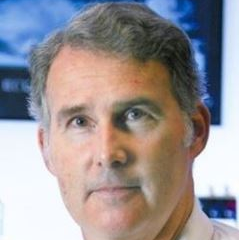The Law of Entropy Increase and Boltzmann’s H-Theorem
A special issue of Entropy (ISSN 1099-4300). This special issue belongs to the section "Thermodynamics".
Deadline for manuscript submissions: closed (17 May 2021)
Special Issue Editors
Interests: the second law of thermodynamics; retrocausation; nanotechnology; plantary formation; plasma physics
Special Issues, Collections and Topics in MDPI journals
Interests: foundations of quantum mechanics; second law of thermodynamics; fundamental obscurities in quantum mechanics; mesoscopic quantum phenomena
Special Issues, Collections and Topics in MDPI journals
Special Issue Information
Dear Colleagues,
The second law of thermodynamics—the principle that entropy never decreases in any spontaneous process—is one of the most widely applicable and thoroughly tested physical principles. It is also perhaps the most fiercely debated. Among physical principles, it is an outlier in several respects. First, since its discovery nearly 200 years ago, starting with Carnot’s limits on heat engine efficiency (1824), nearly a dozen statements have gained currency within the scientific community; in contrast, statements of most other physical laws are monolithic. Second, it is the only major law that is often stated as an inequality (i.e., ∆S ≥ 0 for any spontaneous process) rather than an equality, as is the case for standard conservation laws, which derive from underlying natural symmetries. Third, it is fundamentally statistical in nature; thus, like any good election in Chicago or Moscow, it might be open to being swung or stolen. Fourth, and most salient to this Special Issue of Entropy, it is commonly believed that the second law can be ‘proven’ from first principles. While indeed it can be proven to hold for certain simple systems, e.g., the thermalization of an ideal gas, these simple models are often extrapolated to all physical systems. This position is epistemologically unsound. Physical laws are brute facts about Nature, axioms inferred from experiment that, by definition, cannot be derived; indeed, were they derivable, they would be merely theorems of deeper laws. Even a single valid counterexample is sufficient to refute the absolute nature of any law.
Historically, the second law’s mystique of absolute inviolability might be traced to Boltzmann’s celebrated H-theorem with its specious Stosszahlansatz; or to Arthur Eddington’s famously fawning oath of allegiance to it; or perhaps to the gratuitous overkill meted out to Maxwell’s demon that continues today. This fundamentalist mindset upheld the second law in the court of scientific opinion for more than a century, despite valid doubts and objections. However, this pretense is collapsing, this omerta breaking. The H-theorem was questioned by Max Planck and continues to raise concerns today, especially in the quantum realm. The Maxwell demon has been superseded by a heartier, more substantive foe: legions of Maxwell zombies. Eddington’s oath now has more of a ring of desperation than one of conviction. Over the last three decades, an unprecedented number of counterexamples have been advanced against the second law. The first wave was primarily theoretical, but in recent years, experimental results have strongly indicated that the second law either already has been or is likely soon to be violated.
This Special Issue of Entropy is devoted to substantive, new contributions to the foundations of thermodynamics and statistical mechanics with an emphasis on the status of the second law, the law of entropy increase.
Dr. Daniel Sheehan
Dr. Alexey Nikulov
Guest Editors
Manuscript Submission Information
Manuscripts should be submitted online at www.mdpi.com by registering and logging in to this website. Once you are registered, click here to go to the submission form. Manuscripts can be submitted until the deadline. All submissions that pass pre-check are peer-reviewed. Accepted papers will be published continuously in the journal (as soon as accepted) and will be listed together on the special issue website. Research articles, review articles as well as short communications are invited. For planned papers, a title and short abstract (about 100 words) can be sent to the Editorial Office for announcement on this website.
Submitted manuscripts should not have been published previously, nor be under consideration for publication elsewhere (except conference proceedings papers). All manuscripts are thoroughly refereed through a single-blind peer-review process. A guide for authors and other relevant information for submission of manuscripts is available on the Instructions for Authors page. Entropy is an international peer-reviewed open access monthly journal published by MDPI.
Please visit the Instructions for Authors page before submitting a manuscript. The Article Processing Charge (APC) for publication in this open access journal is 2600 CHF (Swiss Francs). Submitted papers should be well formatted and use good English. Authors may use MDPI's English editing service prior to publication or during author revisions.
Keywords
- second law of thermodynamics
- entropy
- statistical mechanics







